
From left to right: Moo Stricker, Al Chen, Diana Trujillo, Eric Aguilar and Michelle Tomey Colizzi as they appear in a new “Behind the Spacecraft” video series about the NASA’s Perseverance Mars rover. Credit: NASA 360
These are the people who built NASA’s next Mars rover and who will guide it to a safe landing in Jezero Crater.
Behind every spacecraft there are stories of hope, passion and creativity from the people who design and build these complex machines. In the case of NASA’s next Mars rover, there has also been no shortage of perseverance.
The new video series “Behind the Spacecraft” profiles some of the many engineers and scientists working tirelessly to send the agency’s Perseverance rover to Mars. The team is on track to launch Perseverance in July or August and land in Mars’ Jezero Crater in February 2021.
Sending a rover to the Red Planet is more than just 3…2…1… Liftoff! It takes 1,000s of people and years of hard work to get a spacecraft from Earth to Mars. So when NASA’s Perseverance rover touches down on the Martian surface, it will be because of the talented NASA minds that helped to make it happen.
In these videos, you’ll learn not only about what it’s like to work on such a mission but also about the diverse backgrounds and career trajectories of seven Perseverance team members at NASA’s Jet Propulsion Laboratory in Southern California:
Katie Stack Morgan is a deputy project scientist with the mission. Her passion for geology led her to the red rocks of Mars, and she can’t wait to look for signs of ancient microbial life with Perseverance.
When the NASA Perseverance Mars rover lands on the Red Planet, it will be caching rock samples for a future mission to collect and return to Earth. For Mars 2020 Deputy Project Scientist at NASA-JPL Katie Stack Morgan, studying rocks is not only important in the search for ancient life, but it’s also a hobby.
Moo Stricker’s job is to make sure the rover is as clean as possible before it lands on Mars. This is important, because if the mission does detect signs of past microbial life, scientists will need to be confident that they’re not just seeing germs that hitched a ride from Earth.
When NASA’s Perseverance rover travels to Mars to search for signs of life, it’s important that the spacecraft doesn’t bring along any Earth bacteria. That’s why NASA-JPL scientist Moogega Stricker is ensuring that the Mars rover is free and clear of microbial stowaways. So if we ever do find life on Mars, we’ll be sure that it didn’t originate on Earth.
Al Chen leads the landing team for Perseverance, which carries a new navigation system for touching down in more difficult locations. Landing Mars robots is a family affair for him: His wife, fellow systems engineer Julie Wertz Chen, ensured the InSight lander safely touched down in 2018.
NASA-JPL engineer Al Chen is no stranger to landing things on Mars. In fact, it’s sort of the family business. Both Al and his wife have had the opportunity to land spacecraft on the Red Planet. Up next, Al will be at the helm as NASA’s Perseverance Mars rover makes its entry, descent and landing into the Martian atmosphere.
Heather Bottom, a former professional dancer, is now helping choreograph the rover’s launch and journey to Mars. As a systems engineer, she makes sure that all the complicated parts work together as a cohesive whole.
As a professional dancer in New York City, NASA-JPL engineer Heather Bottom never forgot her passion for space. Now in Act II of her career, Heather is preparing to send NASA’s Perseverance Mars rover to the surface of the Red Planet.
Michelle Tomey Colizzi helped assemble the spacecraft in a JPL clean room, focusing on the aeroshell, a capsule that will keep Perseverance safe from the ravages of space travel during its interplanetary trip to Mars.
From launch to the journey to Mars to atmospheric entry to surviving on the Martian surface, NASA’s Perseverance rover will have to endure a lot of extreme environments on its way to the Red Planet. But before this spacecraft experiences the real deal, we need to test all of these conditions on Earth first. Meet Michelle Tomey Colizzi, a NASA-JPL engineer who is working to make that happen.
Diana Trujillo paid her way through college by cleaning houses, but now, through her work on the rover’s robotic arm, she is helping to find out whether there might have been ancient life on Mars.
When she moved to the U.S. from Colombia, NASA-JPL engineer Diana Trujillo didn’t speak English. She paid her way through college by cleaning houses, learned English, and is now working to send her second spacecraft to the surface of Mars.
Eric Aguilar oversees a laboratory where engineers test engineering models of rover subsystems to make sure they work as expected on Earth before the rover gets down to business on Mars.
When NASA’s Perseverance Mars rover starts its quest for compelling Martian rocks, it will have quite the to-do list: Locate, drill, collect, stash, and so much more. The robotic caching system that will get the job done is solid as a rock, thanks to NASA-JPL engineer Eric Aguilar and his team.


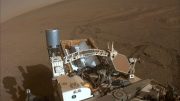

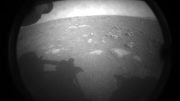
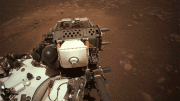
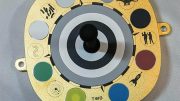

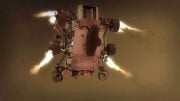
Be the first to comment on "Meet the Scientists and Engineers Behind NASA’s Perseverance Mars Rover"